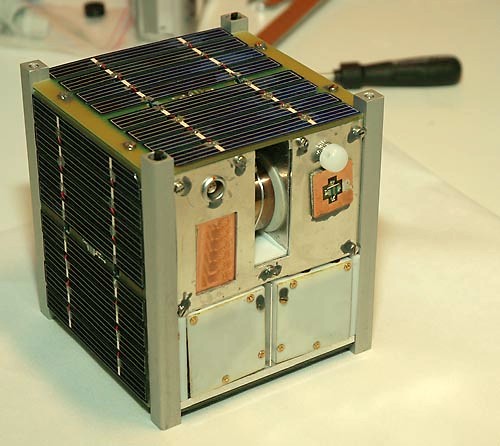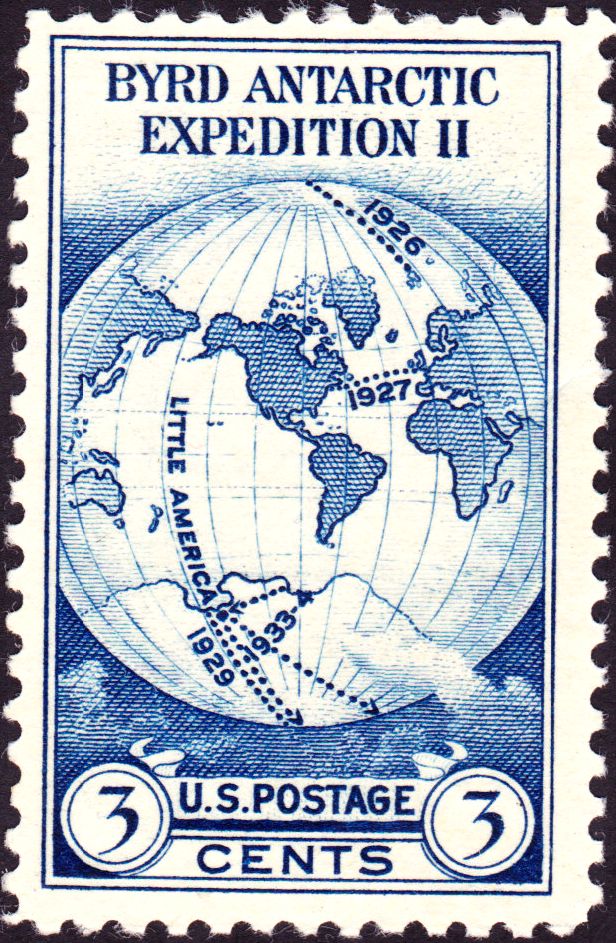|
Explorer-1 Prime
Explorer-1 rime'', also known as E1P and Electra, was a CubeSat-class picosatellite built by the Space Science and Engineering Laboratory (SSEL) at Montana State University. It was launched aboard a Taurus-XL rocket from Vandenberg Air Force Base, California on 4 March 2011, but failed to achieve orbit after the rocket malfunctioned. As part of NASA's ELaNA program, E1P was to be launched along with NASA's Glory satellite, Kentucky Space's KySat-1 and the University of Colorado-Boulder's Hermes CubeSats. E1P was a reflight mission of ''Explorer 1'', the first American satellite, using modern technology including a geiger tube donated by James Van Allen. The name of the satellite was also adopted from Van Allen, who referred to the satellite as ''Explorer-1 Prime'' prior to his death in 2006. It was originally intended to be launched in 2008 to commemorate the 50th anniversary of the launch of ''Explorer 1''. If it had been successful, E1P would have been Montana's first ... [...More Info...] [...Related Items...] OR: [Wikipedia] [Google] [Baidu] |
Montana State University - Bozeman
Montana State University (MSU) is a public land-grant research university in Bozeman, Montana. It is the state's largest university. MSU offers baccalaureate degrees in 60 fields, master's degrees in 68 fields, and doctoral degrees in 35 fields through its nine colleges. More than 16,700 students attended MSU in fall 2019, taught by 796 full-time and 547 part-time faculty. MSU is classified among "R1: Doctoral Universities – Very high research activity" and had research expenditures of $129.6 million in 2017. Located on the south side of Bozeman, the university's campus is the largest in the state. The university's main campus in Bozeman is home to KUSM television, KGLT radio, and the Museum of the Rockies. MSU provides outreach services to citizens and communities statewide through its agricultural experiment station and 60 county and reservation extension offices. The elevation of the campus is above sea level. History Establishment of the college Montana became a st ... [...More Info...] [...Related Items...] OR: [Wikipedia] [Google] [Baidu] |
Explorer 1
Explorer 1 was the first satellite launched by the United States in 1958 and was part of the U.S. participation in the International Geophysical Year (IGY). The mission followed the first two satellites the previous year; the Soviet Union's Sputnik 1 and Sputnik 2, beginning the Cold War Space Race between the two nations. Explorer 1 was launched on 1 February 1958 at 03:47:56 GMT (or 31 January 1958 at 22:47:56 Eastern Time) atop the first Juno booster from LC-26A at the Cape Canaveral Missile Test Center of the Atlantic Missile Range (AMR), in Florida. It was the first spacecraft to detect the Van Allen radiation belt, returning data until its batteries were exhausted after nearly four months. It remained in orbit until 1970. Explorer 1 was given Satellite Catalog Number 00004 and the Harvard designation 1958 Alpha 1, the forerunner to the modern International Designator. Background The U.S. Earth satellite program began in 1954 as a joint U.S. Army and U. ... [...More Info...] [...Related Items...] OR: [Wikipedia] [Google] [Baidu] |
CubeSats
A CubeSat is a class of miniaturized satellite based around a form factor consisting of cubes. CubeSats have a mass of no more than per unit, and often use commercial off-the-shelf (COTS) components for their electronics and structure. CubeSats are put into orbit by deployers on the International Space Station, or launched as secondary payloads on a launch vehicle. , more than 1,600 CubeSats have been launched. In 1999, California Polytechnic State University (Cal Poly) professor Jordi Puig-Suari and Bob Twiggs, a professor at Stanford University Space Systems Development Laboratory, developed the CubeSat specifications to promote and develop the skills necessary for the design, manufacture, and testing of small satellites intended for low Earth orbit (LEO) that perform a number of scientific research functions and explore new space technologies. Academia accounted for the majority of CubeSat launches until 2013, when more than half of launches were for non-academic purposes, a ... [...More Info...] [...Related Items...] OR: [Wikipedia] [Google] [Baidu] |
Student Satellites
A student is a person enrolled in a school or other educational institution. In the United Kingdom and most commonwealth countries, a "student" attends a secondary school or higher (e.g., college or university); those in primary or elementary schools are "pupils". Africa Nigeria In Nigeria, education is classified into four system known as a 6-3-3-4 system of education. It implies six years in primary school, three years in junior secondary, three years in senior secondary and four years in the university. However, the number of years to be spent in university is mostly determined by the course of study. Some courses have longer study length than others. Those in primary school are often referred to as pupils. Those in university, as well as those in secondary school, are referred to as students. The Nigerian system of education also has other recognized categories like the polytechnics and colleges of education. The Polytechnic gives out National Diploma and Higher Nation ... [...More Info...] [...Related Items...] OR: [Wikipedia] [Google] [Baidu] |
List Of CubeSats
The following is a list of CubeSats, nanosatellites used primarily by universities for research missions, typically in low Earth orbits. Some CubeSats became their country's first national satellite. The extensivNanosatellite and CubeSat Databaselists nearly 4,000 CubeSats and NanoSats have been launched since 1998. The organization forecasts that 2080 nanosats will launch within the next 6 years. Research and development * SBUDNIC was launched to test Arduino Nano and other commercial off-the-shelf technology in space, using a simple, open-source design. * An ambitious project is the QB50, an international network of 50 CubeSats for multi-point by different universities and other teams, ''in-situ'' measurements in the lower thermosphere (90–350 km) and re-entry research. QB50 is an initiative of the von Karman Institute and is funded by the European Union. Double-unit ("2-U") CubeSats (10x10x20 cm) are foreseen, with one unit (the 'functional' unit) providing the usual s ... [...More Info...] [...Related Items...] OR: [Wikipedia] [Google] [Baidu] |
Magnetorquer
A magnetorquer or magnetic torquer (also known as a torque rod) is a satellite system for attitude control, detumbling, and stabilization built from electromagnetic coils. The magnetorquer creates a magnetic dipole that interfaces with an ambient magnetic field, usually Earth's, so that the counter-forces produced provide useful torque. Functional principle Magnetorquers are essentially sets of electromagnets laid out to yield a rotationally asymmetric (anisotropic) magnetic field over an extended area. That field is controlled by switching current flow through the coils on or off, usually under computerized feedback control. The magnets themselves are mechanically anchored to the craft, so that any magnetic force they exert on the surrounding magnetic field will lead to a magnetic reverse force and result in mechanical torque about the vessel's center of gravity. This makes it possible to freely pivot the craft around in a known local gradient of the magnetic field by only usi ... [...More Info...] [...Related Items...] OR: [Wikipedia] [Google] [Baidu] |
NPOESS Preparatory Project
The Suomi National Polar-orbiting Partnership (Suomi NPP), previously known as the National Polar-orbiting Operational Environmental Satellite System Preparatory Project (NPP) and NPP-Bridge, is a weather satellite operated by the United States National Oceanic and Atmospheric Administration (NOAA). It was launched in 2011 and continues to operate in June 2022. Suomi NPP was originally intended as a pathfinder for the National Polar-orbiting Operational Environmental Satellite System (NPOESS) program, which was to have replaced NOAA's Polar Operational Environmental Satellites (POES) and the U.S. Air Force's Defense Meteorological Satellite Program (DMSP). Suomi NPP was launched in 2011 after the cancellation of NPOESS to serve as a stop-gap between the POES satellites and the Joint Polar Satellite System (JPSS) which will replace them. Its instruments provide climate measurements that continue prior observations by NASA's Earth Observing System (EOS). Name The satellite is na ... [...More Info...] [...Related Items...] OR: [Wikipedia] [Google] [Baidu] |
Explorer-1 Prime Unit 2
M-Cubed is a miniaturized satellite built by students at the University of Michigan in a joint project run by the Michigan Exploration Laboratory (MXL) and JPL. It is an example of the popular CubeSat design for amateur satellites. It was launched from Vandenberg Air Force Base on October 28, 2011 atop a Delta II rocket. M-Cubed was launched as a secondary payload to the Suomi NPP satellite, along with AubieSat-1, DICE-1, DICE-2, Explorer-1 Prime, and RAX-2. M-Cubed, short for Michigan Multipurpose Minisat, was designed as a technology demonstrator for a new FPGA-based image processing system intended for a future NASA mission, Aerosol-Cloud-Ecosystem, recommended by the Earth Science Decadal Survey. The mission was also intended to validate the satellite bus design for use in future cubesat missions. The satellite uses a passive magnetorquer for attitude control, consisting of a large permanent magnet that aligns the satellite with the Earth's magnetic field. On-board control i ... [...More Info...] [...Related Items...] OR: [Wikipedia] [Google] [Baidu] |
James Van Allen
James Alfred Van Allen (September 7, 1914August 9, 2006) was an American space scientist at the University of Iowa. He was instrumental in establishing the field of magnetospheric research in space. The Van Allen radiation belts were named after him, following his discovery using Geiger–Müller tube instruments on the 1958 satellites (Explorer 1, Explorer 3, and Pioneer 3) during the International Geophysical Year. Van Allen led the scientific community in putting scientific research instruments on space satellites. Early years and education Van Allen was born on 7 September 1914 on a small farm near Mount Pleasant, Iowa. As a child, he was fascinated by mechanical and electrical devices and was an avid reader of ''Popular Mechanics'' and ''Popular Science'' magazines. He once horrified his mother by constructing a Tesla coil that produced foot-long sparks and caused his hair to stand on end. A fellowship allowed him to continue studying nuclear physics at the Carnegie In ... [...More Info...] [...Related Items...] OR: [Wikipedia] [Google] [Baidu] |
United States
The United States of America (U.S.A. or USA), commonly known as the United States (U.S. or US) or America, is a country primarily located in North America. It consists of 50 U.S. state, states, a Washington, D.C., federal district, five major unincorporated territories, nine United States Minor Outlying Islands, Minor Outlying Islands, and 326 Indian reservations. The United States is also in Compact of Free Association, free association with three Oceania, Pacific Island Sovereign state, sovereign states: the Federated States of Micronesia, the Marshall Islands, and the Palau, Republic of Palau. It is the world's List of countries and dependencies by area, third-largest country by both land and total area. It shares land borders Canada–United States border, with Canada to its north and Mexico–United States border, with Mexico to its south and has maritime borders with the Bahamas, Cuba, Russia, and other nations. With a population of over 333 million, it is the List of ... [...More Info...] [...Related Items...] OR: [Wikipedia] [Google] [Baidu] |
Hermes (satellite)
Hermes was an American satellite which was to have been operated by the Colorado Space Grant Consortium. Intended to perform technology demonstration experiments in low Earth orbit, it was lost during launch in March 2011 when the rocket that was carrying it failed to achieve orbit. Hermes was a single-unit CubeSat picosatellite which was primarily designed to test communications systems for future satellites. It was intended to test a new system which would allow data to be transferred at a higher rate than on previous satellites, thereby enabling future missions to return more data from scientific experiments or images. A secondary objective was to have seen tests performed upon the satellite bus, which was to have served as the basis for future COSGC missions. The satellite would also have returned data on the temperature and magnetic field of its surroundings. Hermes was launched by Orbital Sciences Corporation using a Taurus-XL 3110 carrier rocket flying from Launch Comple ... [...More Info...] [...Related Items...] OR: [Wikipedia] [Google] [Baidu] |






